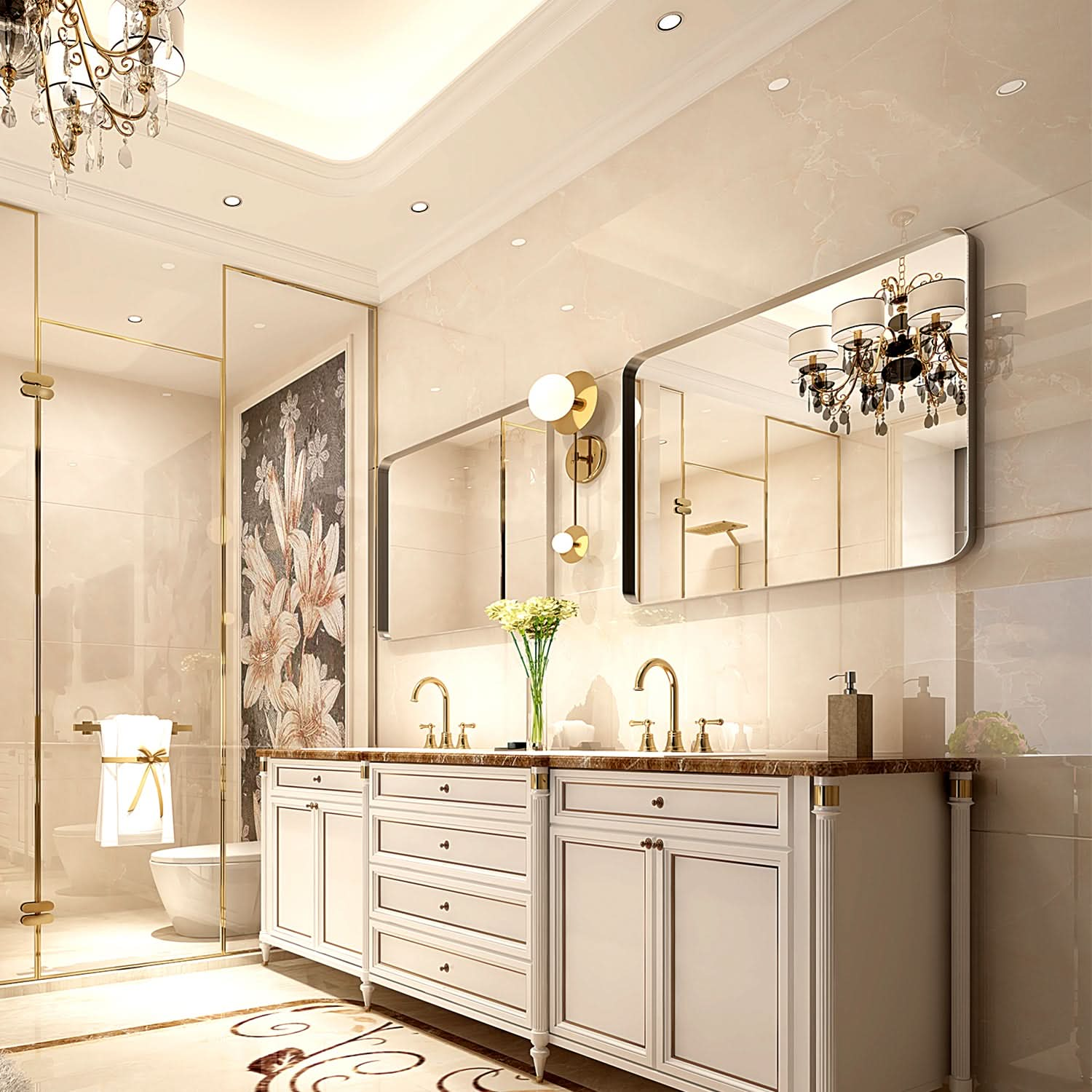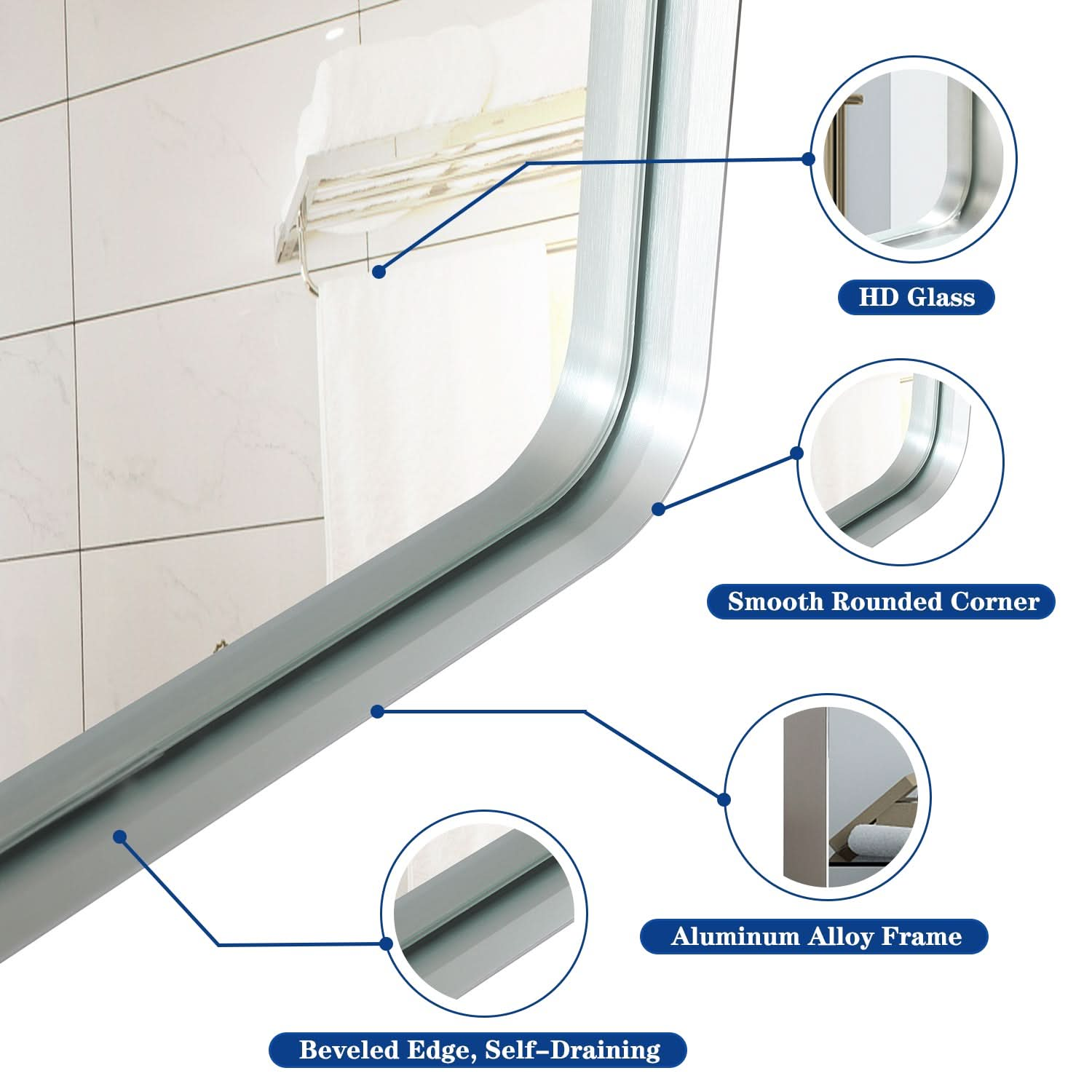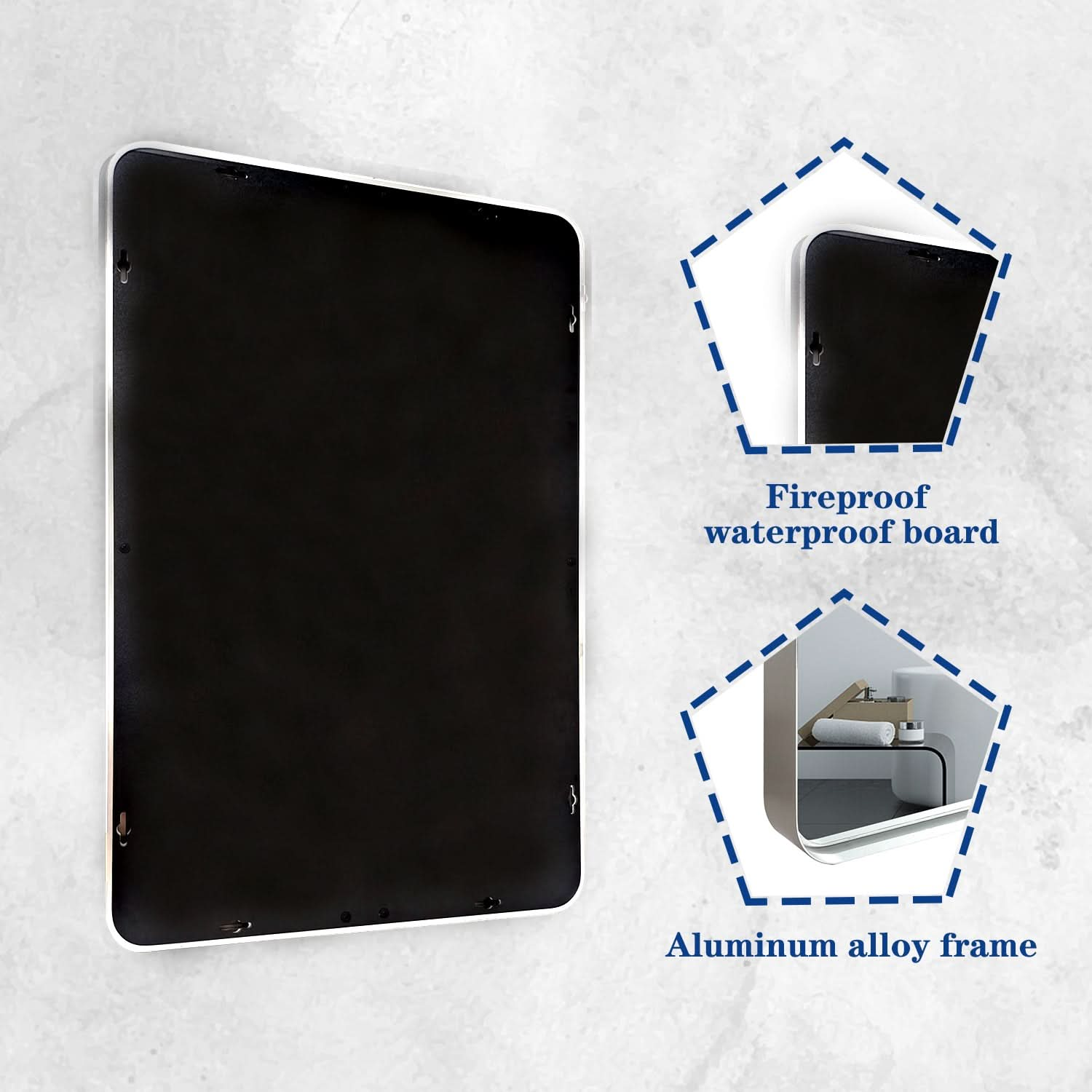Table of Contents
- Why does mirror placement matter?
- How much space should you leave?
- Expert tips for tricky layouts
- Balancing looks and function
- Final thoughts
- Your questions, answered
- What others are saying
When designing a bathroom, choosing the right placement for the vanity and mirror might seem straightforward, but it significantly impacts the functionality and overall aesthetics of the space. One of the most frequently asked questions is, "How much space should I leave between my bathroom vanity and the mirror?" This decision not only affects the convenience of daily use but also influences the design harmony of your bathroom. In this article, we will dive into the best practices for determining the optimal spacing to resolve potential issues during your renovation.

Why Mirror Placement Matters
The mirror above your bathroom vanity is more than just a reflective surface—it’s the core of both design and function. The placement of the mirror directly affects the bathroom’s lighting, spatial perception, and usability. A well-placed mirror can amplify light, making the bathroom appear brighter and more spacious, while ensuring that you feel comfortable during daily routines. For instance, if the mirror is installed too high or too low, it can lead to discomfort or strain on the neck and shoulders.
Additionally, many homeowners make the mistake of neglecting the relationship between the mirror and other elements, such as faucets, lighting fixtures, and decorative items. This oversight can lead to a disjointed space that feels cluttered. Research shows that proper mirror placement not only improves functionality but also significantly enhances the visual impact of the space【Source: Interior Design Magazine】.
Standard Spacing Guidelines: A Scientific Starting Point

1. 5 to 10 Inches: The Golden Range
A common guideline is to leave 5 to 10 inches (approximately 12.7 to 25.4 cm) of space between the top of the vanity and the bottom edge of the mirror. This range ensures that the mirror is positioned within a comfortable viewing height for most users, avoiding the inconvenience of it being too high or too low. This spacing also provides enough room for installing light fixtures or decorative elements on the wall without making the mirror look cramped or isolated.
2. Vanity Height: The Basis for Custom Adjustments
The height of the vanity is a key factor in determining the correct placement of the mirror. Standard vanity heights range from 32 to 36 inches (approximately 81.3 to 91.4 cm). For a vanity that stands 36 inches tall, it is recommended to leave 5 to 8 inches of space between the vanity and the mirror to ensure that the mirror is at an ideal height for most adults.
If your vanity is either shorter or taller than standard heights, you will need to adjust the mirror’s placement accordingly. For example, a taller vanity might only require 3 to 5 inches of space, while a shorter vanity might need 10 inches or more. Customizing the adjustment based on your household’s needs can prevent discomfort and improve usability【Source: Home Design Guidelines】.
In-Depth Analysis: Expert Tips to Solve Common Design Challenges

1. Eye-Level Considerations: The Importance of Personalized Design
For families, the height of the users is a crucial factor. While standard spacing works for most cases, considering the average height of household members and adjusting the mirror height accordingly can greatly enhance the user experience. This is especially important if you have particularly tall or short family members, as setting the mirror’s center at their average eye level can significantly improve comfort.
The Journal of Home Architecture suggests that mirrors should be placed at a height where the most frequent users can look directly into the mirror without needing to bend or tiptoe, thereby enhancing user experience【Source: Journal of Home Architecture】.
2. The Critical Role of Lighting: Eliminating Shadows and Enhancing Functionality

Lighting is often an overlooked aspect of bathroom design, yet it directly impacts the functionality of the mirror. Whether it’s for morning grooming or evening relaxation, good lighting can make these daily tasks much easier. If the lighting around the mirror is uneven, it can cast shadows on the face, making tasks like applying makeup or shaving more challenging.
The American Lighting Association recommends considering mirrors with integrated lighting, such as those from Kohler or Philips. These mirrors not only provide even lighting but also allow you to adjust the brightness and color temperature to suit different times of the day and specific needs【Source: American Lighting Association】.
3. Mirror Shape and Size: Key to Spatial Perception
The shape and size of the mirror influence not only the visual effect but also the amount of space you should leave between the vanity and the mirror. A larger mirror can enhance the sense of space, but if placed incorrectly, it can also make the bathroom feel cramped. Conversely, a smaller mirror may require less spacing but might not provide adequate coverage.
For example, when choosing a rectangular mirror, ensure that the width aligns with the vanity without extending too far beyond its edges, maintaining a consistent design. For round or oval mirrors, often used to soften bathroom lines, placement might vary depending on the size and overall room design.
Selecting a mirror that complements the vanity in both size and shape is crucial. Brands like ACE DECOR offer a range of mirrors that cater to different styles and sizes, helping you find the perfect fit.
4. Storage and Accessibility: Maximizing Space Efficiency

In modern households, functionality is just as important as aesthetics. Many homeowners opt for mirrored medicine cabinets not only for the reflective surface but also for the convenience of storing toiletries. However, when installing a mirrored cabinet, it’s essential to ensure that there is enough space to fully open the cabinet doors without obstruction. This requires leaving adequate space between the vanity and mirror to avoid compromising usability.
For small bathrooms, mirrors with built-in storage, like those from Robern and Duravit, can help you make the most of every inch of space while keeping the bathroom tidy and organized.
5. Aligning Faucets and Mirrors: Balancing Aesthetics and Function

Another common issue consumers face is neglecting the alignment between the mirror and the faucet. The mirror should be centered above the sink and faucet to ensure a balanced appearance and functional ease. Particularly in small bathrooms, a misaligned mirror can disrupt the sense of space, making the bathroom feel even smaller.
For wall-mounted faucets, ensure that the mirror is placed high enough to avoid interfering with the faucet’s operation. For countertop faucets, make sure the bottom edge of the mirror is far enough from the faucet to prevent water splashes from reaching the mirror, which can lead to water spots and frequent cleaning.
The Art of Design: Achieving Harmony Between Aesthetics and Function

1. The Mirror as a Focal Point: Enhancing Spatial Dynamics
In bathroom design, the combination of vanity and mirror often serves as the room’s focal point. Therefore, the mirror’s position, size, and style must complement the vanity to create a harmonious look. A large, ornate mirror can contrast beautifully with a minimalist vanity, adding depth and visual interest to the design.
Using the mirror as a focal point can also enhance the sense of space. In small bathrooms, a large mirror not only reflects more light but also makes the space feel more open.
2. Coordinating Elements: Creating a Flowing Design
Every element in a bathroom design should work together to create a unified visual flow. The spacing between the vanity and mirror must also coordinate with lighting fixtures, wall decor, and the room’s architectural features. A design that lacks coordination can disrupt the visual flow, making the space feel cluttered and disorganized.
For example, if you install sconces on either side of the mirror, ensure they are evenly spaced and that the mirror is centered between them. Additionally, the mirror’s material and color should match the bathroom’s overall style, enhancing design consistency.
3. Adjusting for Bathroom Size: Avoiding Common Design Pitfalls
The size of your bathroom dictates the level of flexibility you have in design. Larger bathrooms can accommodate bigger mirrors and more complex layouts, while smaller bathrooms require more precise planning. Particularly in tight spaces, the choice and placement of the mirror must be carefully considered to avoid making the space feel cramped.
For compact bathrooms, horizontal mirrors are an excellent choice as they visually stretch the space, making the room appear wider. If space allows, consider a mirror with storage capabilities, such as a mirrored medicine cabinet, which offers additional storage without compromising design simplicity and functionality.
Conclusion
Determining the right spacing between your bathroom vanity and mirror is not just about aesthetics—it’s also about optimizing the space for usability. By following expert advice and considering factors such as vanity height, mirror size and shape, and overall room design, you can create a bathroom that is both beautiful and practical. Whether you choose a frameless mirror from ACE DECOR, a mirrored cabinet from Robern, or a lighted mirror from Kohler, getting the spacing right will help you create a bathroom space you’ll love to use every day.

FAQ
1. How much space should I leave between my bathroom vanity and mirror?
It is generally recommended to leave about 5 to 10 inches (approximately 12.7 to 25.4 cm) of space between the top of the vanity and the bottom edge of the mirror. This ensures a comfortable height and a balanced look.
2. Does the height of the vanity affect mirror placement?
Yes, the height of the vanity should be considered when placing the mirror. Standard vanity heights range from 32 to 36 inches (approximately 81.3 to 91.4 cm), and the mirror should be placed at a height that is comfortable for users.
3. Should I consider lighting when placing my mirror?
Absolutely. Proper lighting can enhance the functionality of your mirror. If you have wall-mounted lights or integrated lighting, ensure the mirror placement allows for even illumination without casting harsh shadows.
4. What should I do if my bathroom has limited space?
In small bathrooms, consider using a mirror that doubles as storage, such as a mirrored medicine cabinet, to save space and keep your bathroom organized.
5. How do I align my mirror with my faucet?
The mirror should be centered above the sink and faucet for a balanced appearance. Ensure that the mirror is placed high enough to avoid interfering with the faucet’s operation.
Popular Blog Review:
How to Align Your Barn Door Shower Door for Perfect Closure
Why a 30 Inch Single Hanging Bathtub Door Is the Perfect Fit for Your Cozy Bathroom
Maximizing Space: Should Your Shower Door Go All the Way to the Ceiling?

























































